Simon Madziar
Simon Madziar
Here are the main points to remember when choosing your business structure in Australia: Starting a business is an exciting journey, and one of the first major decisions you'll make is choosing your business structure. This choice is foundational, as it affects everything from your taxes and liability to the administrative work required to stay compliant. With several types of business structures available in Australia, it can feel a bit overwhelming. This guide will walk you through the options, helping you understand the pros and cons of each so you can make the right choice for your new venture. Your business structure is the legal framework for your company. It defines your business as a legal entity and dictates how your business operations are managed, taxed, and regulated. Choosing the most suitable type of business structure from the start can save you a lot of time and money down the road. To make the best decision, you need to think about several key aspects of your business, from your personal risk tolerance to your long-term goals. Let's explore what a business structure truly means and the critical factors you should weigh. A business structure is essentially the legal format under which your business operates. It establishes whether you and your business are considered the same legal entity or separate ones. This distinction is one of the most important decisions you will make as a business owner. Why does it matter so much? Your structure directly influences your tax liabilities, the level of asset protection you have, and your ongoing compliance duties. For example, some structures leave your personal assets vulnerable if the business incurs debt, while others create a protective barrier. According to the Australian Taxation Office, your structure is a key factor in your tax and reporting obligations. Ultimately, there is no single "best" option. The appropriate business structure for you will depend entirely on your specific circumstances, your industry, and your vision for the future. Taking the time to understand each one is a critical step toward building a successful and sustainable business. When selecting a structure, you need to consider various aspects of the business you plan to run. The right fit will align with both your current needs and future ambitions. The type of business you operate, your financial situation, and your tolerance for risk all play a significant role. Thinking about these factors early on can prevent future headaches. For example, if your business is in a high-risk industry, protecting your personal assets from business debts should be a top priority. This is where the concept of personal liability becomes extremely important. Consider the following key questions: In Australia, there are four common business structures you can choose from. These are the sole trader, partnership, company, and trust. Each one has a unique set of rules, benefits, and drawbacks that can significantly impact how you run your business. Understanding the fundamental differences is the first step toward choosing the right path. A sole trader structure is the simplest, while a company is more complex but offers greater protection. Below, we'll examine the features of each structure to give you a clearer picture. The sole trader structure is the simplest and most common choice for new small business owners in Australia. As a sole trader, you are the single owner and operator, giving you complete control over all business decisions and assets. This straightforward setup means minimal reporting requirements and low startup costs. Your business income is treated as your personal income for tax purposes, which you report on your individual tax return. This structure also offers flexibility, as you can easily change to a different structure if your business grows. However, the primary disadvantage is unlimited liability. This means you are personally responsible for all business debts, and your personal assets could be at risk if the business fails. A partnership business structure involves two or more people who run a business together. The partners share the profits, losses, and control of the business. It's relatively inexpensive and easy to set up, and it allows business partners to pool their skills and resources. While a formal partnership agreement isn't legally required, it is highly recommended. This document outlines the responsibilities of each partner and how profits and losses will be divided, preventing future disputes. For tax purposes, the partnership lodges a tax return, but each partner pays tax on their share of the net partnership income at their individual tax rate. The main drawback is that partners generally have unlimited liability, meaning they are personally responsible for the business's debts. Each partner can also be held liable for debts incurred by the other partners. A company business structure is a more complex arrangement where the business is a separate legal entity from its owners (shareholders). This is a crucial distinction, as it means the company can own assets and incur debt in its own name. The Australian Securities and Investments Commission (ASIC) is the main regulator for companies. The biggest benefit of this structure is limited liability. Shareholders are generally not personally responsible for the company's debts, which protects their personal assets. Companies pay a flat corporate tax on profits, which can be advantageous. However, setting up and maintaining a company is more expensive and involves significant compliance obligations, including lodging an annual company tax return. Companies also don't get the 50% capital gains tax concession available to other structures. A trust business structure is a legal arrangement where a person or a company (the trustee) holds and manages business assets for the benefit of others (the beneficiaries). The rules of the trust are set out in a legal document called a trust deed. Unlike a company, a trust is not a separate legal entity. One of the main advantages is asset protection, especially if you appoint a corporate trustee. It also offers flexibility, particularly with a discretionary trust, which allows the trustee to decide how to distribute trust income among beneficiaries each year. This can be an effective way to manage tax. A key downside is its complexity and higher setup costs. Additionally, a trust must distribute all its income to beneficiaries each year. If profits are retained, they are taxed at the highest marginal rate, which can hinder business growth. Now that you have an overview of each type of business structure, comparing them side-by-side can help clarify the right legal structure for you. The differences in liability, tax, and cost are significant and will directly affect your business operations and personal finances. Whether you prioritize simplicity, asset protection, or tax flexibility will guide your decision. A company structure offers protection that a sole trader doesn't, while a trust structure provides unique benefits for income distribution. Let's look closer at these key differences. Your legal obligations and level of personal liability are perhaps the most critical distinctions between structures. With a sole trader or partnership, you are personally responsible for all business debts. This means if your business can't pay its bills, your personal assets could be used to cover the shortfall. A company structure, governed by the Corporations Act 2001, provides limited liability. This creates a legal separation between you and the business, protecting your personal assets. A trust can also offer limited liability if it is set up with a corporate trustee, as the company's liability is limited. This table summarizes the liability for each structure: Your tax obligations will vary significantly depending on the structure you choose. Each has a different tax rate and requires a different type of tax return, which can affect your overall tax liabilities. Understanding these differences is essential for financial planning. For example, sole traders report business income on their personal income tax return and pay tax at their marginal rate. In contrast, a company pays a fixed corporate tax on its profits, which is often lower than the top individual tax rate. Here’s a quick breakdown of the tax implications: The cost and complexity of your business operations are directly linked to your chosen structure. A sole trader is the simplest and cheapest to establish and maintain, often only requiring an Australian Business Number (ABN) and a registered business name if you aren't using your own. On the other hand, a company structure is more expensive and complex. It involves registration fees with ASIC, annual review fees, and the requirement to lodge an annual company tax return. Trusts also have higher setup and maintenance costs due to the need for a formal trust deed and more complex accounting. Consider these points regarding cost and complexity: Making the right choice for your business structure can feel daunting, but you can approach it systematically. By breaking the process down into manageable steps, you can confidently select a structure that supports your goals. Remember, while you can change your structure later, getting it right from the start saves time and money. This guide will provide a clear path from assessing your needs to registering your business. Don't hesitate to seek legal advice, especially if you are considering a more complex company structure. Regardless of the structure you choose, there are a few fundamental things you'll need to get your business off the ground. The first step is to apply for an Australian Business Number (ABN), which is a unique identifier for your business. Depending on your structure, you may also need specific legal documents. For instance, a partnership should have a partnership agreement, and a trust requires a trust deed. If you're not trading under your own name, you'll also need to complete a business name registration. Here is a basic checklist to get you started: Choosing the right business structure doesn't have to be complicated. By following a clear, step-by-step process, you can determine the best legal structure for your specific business operations and move forward with the registration. This process involves introspection about your goals, careful evaluation of your options, and seeking professional guidance to confirm your choice. Once you've made a decision, the final step is the official registration. Here are the key steps to follow: Before you can choose a type of business structure, you need to have a clear understanding of your vision. Think about the nature of your business operations. Are you providing a personal skill, or are you building a large-scale enterprise? The answer will help you narrow down your options. Consider the key factors we discussed earlier, such as your projected income, your need for asset protection, and whether you plan on having business partners. For example, if you know you’ll be going into business with someone else, the sole trader structure is immediately ruled out. Your personal financial situation and your appetite for risk are also crucial. Are you comfortable with your personal assets being linked to the business, or is separation a non-negotiable? Answering these questions honestly will provide a strong foundation for your decision. With your goals and needs clearly defined, you can now evaluate how each structure measures up. Create a simple comparison. If your top priority is simplicity and low cost, a sole trader structure might seem appealing. However, if asset protection is your main concern, you'll want to look closer at a company structure or a trust business structure. Think about the trade-offs. A company structure offers excellent protection for your personal assets by separating them from your business assets, but it comes with higher costs and more administrative work. Is that a price you're willing to pay for peace of mind? This evaluation is about balancing the pros and cons in the context of your unique situation. There's no perfect answer, only the most suitable one for you right now. Remember that your business can evolve, and you can change structures later if needed. After doing your own research, it is highly recommended to seek professional legal advice. An accountant or a business lawyer can review your situation and confirm if you're making the right choice. They can also highlight potential issues you may not have considered. Professionals can provide clarity on complex tax implications and ensure your setup is compliant from day one. This step is particularly important if you are leaning toward a company or trust, as these structures have more complex legal requirements. Once you have confirmed your choice, you can proceed with registration. This may involve applying for an ABN and TFN, registering your business name, and for companies, registering with the Australian Securities and Investments Commission (ASIC). Your adviser can help guide you through this process. Choosing the right business structure in Australia is a crucial step for any entrepreneur. By understanding the various options available, such as sole traders, partnerships, companies, and trusts, you can make an informed decision that aligns with your goals and needs. Each structure comes with its own set of advantages, drawbacks, legal responsibilities, and tax obligations, making it essential to evaluate all factors carefully. Remember, this choice can impact not just your operations but also your personal liability and financial success. If you need guidance or have specific questions regarding which structure is best for you, don’t hesitate to get in touch. Your journey towards a successful business start can begin with the right foundation! Tax obligations vary greatly. Sole traders report business income on their personal tax return and pay income tax at marginal rates. Companies pay a flat corporate tax on profits. Partners and trust beneficiaries pay income tax on their share of the distributed profits, which can help manage the overall tax burden. Yes, you can change your business structure as your business grows or your needs change. For example, a sole trader may transition to a company structure to limit liability. However, changing your legal structure can have tax implications and requires a new registration, so it’s wise to seek advice first. The main difference is liability. In a sole trader structure, you have complete control but also unlimited personal liability. A company structure creates a separate legal entity, giving you limited liability that protects your personal assets from business debts, but it involves more complex compliance and costs. Accountants and business lawyers are the best sources of professional help for choosing a type of business structure. They can provide tailored legal advice based on your goals, finances, and industry. If you have business partners, it's crucial to consult with them and a professional to ensure everyone's interests are protected. Looking for help with your accounting, bookkeeping or taxes? Mahler Advisory your Gold Coast small business accountant can help! Click the call button or schedule a online appointment with us. Please note that the above information is general advice only. We recommend you seek advice from a specialist relevant to your personal situation. This information is correct at the time of publishing and is subject to change Tax laws and regulations can change over time, so it is important to stay informed about any updates or amendments that may affect your tax obligations. The Australian Taxation Office (ATO) is the authoritative source for the most up-to-date information regarding tax requirements and regulations in Australia.How to Choose the Right Business Structure in Australia
Key Highlights
Introduction
Understanding Business Structures in Australia
What Is a Business Structure and Why Does It Matter?
Key Factors to Consider When Selecting Your Business Structure

Overview of Common Business Structures in Australia
Sole Trader – Features, Pros and Cons
Partnership – How It Works, Advantages and Disadvantages
Company – Main Characteristics, Benefits and Drawbacks
Trust – Unique Features, Pros and Cons
Comparing Sole Trader, Partnership, Company, and Trust Structures
Legal Responsibilities and Liability
Business Structure
Liability Level
Sole Trader
Unlimited personal liability.
Partnership
Unlimited personal liability, shared among partners.
Company
Limited liability, protecting shareholders' personal assets.
Trust
Liability rests with the trustee (limited if a company).
Tax Obligations for Each Business Structure
Costs and Complexity Involved in Set-Up and Maintenance
Beginner’s Guide to Choosing the Right Structure
What You’ll Need to Get Started (Documents, Resources, Professional Help)
Step-by-Step Process to Select and Register Your Business Structure
Step 1: Assess Your Business Goals and Needs
Step 2: Evaluate Each Structure’s Suitability for Your Situation
Step 3: Seek Professional Advice and Register Your Structure
Conclusion
Frequently Asked Questions
How do tax obligations differ between business structures in Australia?
Is it possible to change my business structure later on?
What is the difference between a sole trader and a company in Australia?
Who can help me decide on the best business structure for my business?






